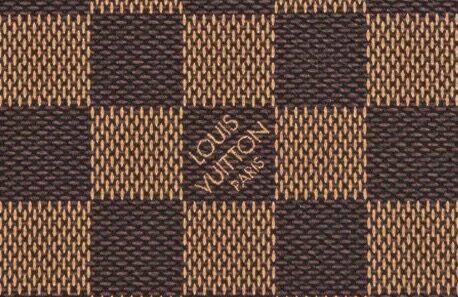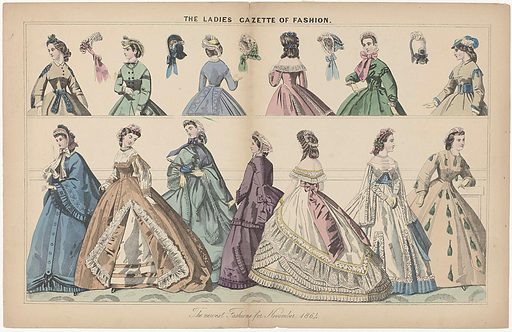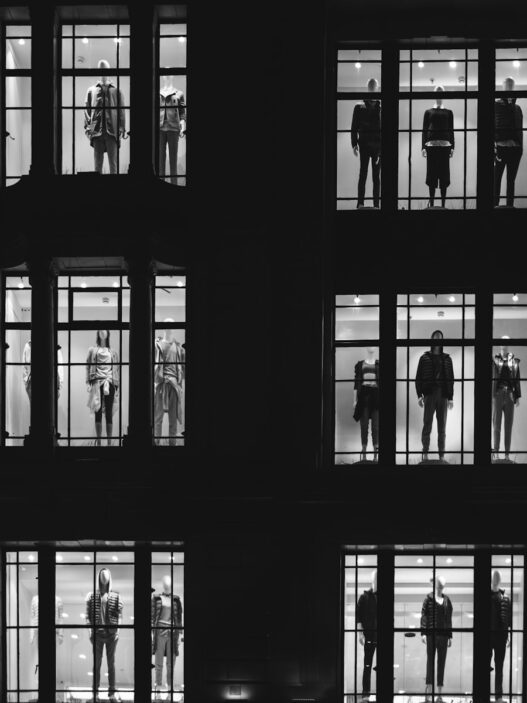Fashion is often regarded as a matter of personal taste – it is an expression of identity shaped by culture, geography, era, time of living, and social status. Yet throughout history, fashion has also been a prominent matter in the law. In certain periods, clothing functioned less as a self-expression and more as a legal declaration of status, virtue, and obedience. This article examines a pivotable period in English history when legislation governed not only a vast amount of direction towards individual expenditures, the fabrics one wore but the very contours of private lie – from the number of courses served at meals, how many guests at weddings, dinner, or dance, and how long they were permitted to spend in taverns and even how much they can drink. Sumptuary laws, enacted between the 14th and 17th centuries, reveal three primary motives: 1) the desire to preserve visible socio-economic divisions, so that individuals can identify each other’ ranking in society by looking at the way they dress; 2) the desire to check practices where regarded as deleterious in their effects and the idea that luxury and extravagance were wicked and harmful to the morals of the people; 3) economic motives which are: a) to encourage home industries and discourage foreign goods, and b) to be part of the sovereign to have people save their money, so that the people can help the sovereign in time of end.[1]
By tracing the evolution of these laws, this article explores how fashion became a tool of governance – and how its symbolic power continues to shape our understanding of virtue, class, and autonomy in contemporary society.
Edward III and the Birth of Sartorial Regulation
The earliest English sumptuary laws emerged under Edward III, who ascended the throne in 1327. Often described as “the king who taught the English people how to dress,” Edward presided over a period shaped by two major forces: a) the wealth generated by the wool trade, which expanded the English commerce; b) the Hundred Years’ War, which necessitated tighter control over trade and spending. These two forces have led to building a national personal character and a national costume, but also a socio-economic division in dressing. For example, the upper classes wore garments like the cote-hardie (or hardi), which was a very tight-fitting tunic, following the lines of the figure, and it was buttoned down the front with a jewelled or decorated belt around the hips. The tunics of the aristocracy were made of the most gorgeous materials: cloth of gold or silver, velvet, silk, and satin. The use of some items was forbidden in certain instances by the sumptuary laws. Ornamentation included embroidery, pearls, gold and other precious stones. While ordinary citizens mimicked these styles, they did so with humbler fabrics and simpler cuts. For example, over the cote-hardie was worn a cloak or rattle which varied in shape, and these cloaks were circular and buttoned to the shoulder. Therefore, the sumptuary laws restricted access to these materials, reinforcing a visual hierarchy. The wardrobe has become a legal document, worn rather than written.
Elizabethan Law and the Aesthetics of Sovereignty
As Edward III’s regulation has become a foundational figure in national dress, Henry VIII and Elizabeth I’s reigns have led to the sumptuary laws becoming much more codified and expansive. For example, Elizabeth’s 1562 proclamation asserted, ‘None shall wear in his apparel any silk of the colour purple, cloth of gold tissue, but only the King, Queen…except dukes and marquises who may wear in doublets and sleeveless coats cloth of gold of tissue not exceeding £5 the yard, and purple in mantles of the Garter.’ This exclusion of language has made it clear that the law specified not only fabrics and colours, but also spending limits: aristocrats were permitted annual expenditures of up to £100, while lower-ranking individuals were capped at £40.
These restrictions have rendered a status legible briefly. Clothing has become a mechanism for surveillance – assessing obedience, virtue, and rank as fabrics like silk and velvet were reserved for mobilising, symbolising power and prestige, which has marked social class. The 1574 law issued at Greenwich on the 15th June 157, only duchesses, marchandesses and countesses were allowed to wear fur sable in their gowns, curtails, potles and sleeves; other dress restrictions were listed for different levels of status and society too.[2] These granular distinctions have reinforced a rigid socio-economic hierarchy, and it has shaped a personal identity through a legal constraint.
These distinctions were also seen in negative ways, which has affected people’s own personal characteristics. For example, in periods of economic upheaval, such as the Black Death, these boundaries were disrupted. When lower classes acquired costly fabrics, the elite responded with anxiety and disdain.[3]As Scholz observes, ‘Rapid social change enabled groups and individuals that had previously been excluded from social and political agency to enter the field of social action, which generated tremendous anxieties about perceived hierarchies in Tudor England.[4]The countless competitions of the upper class have led to common materialistic norms and values, but also to consumption being increasingly common. As Elizabeth I exhibited her superiority to all of her subjects through the example of her extensive wardrobe, which was both indulgent and strategic. As McCracken, she used her expenditures as instruments of sovereignty – encouraging displays of wealth among the nobility to foster competition and reinforce loyalty.[5]This has led to a materialistic and consumer-driven society amongst the elite for royal favour and to ensure family status for the next generation, for high ranking and wealth via expensive clothing, maintaining the image of families in contrast to social inferiors.
Modern England: Branding, Class, and Visibility
In comparison to the countless legal legislation of the sumptuary laws in the medieval period, nowadays modern England no longer enforces sumptuary laws, fashion continues to signal class and identity. Although there are strict protocols still present in the British royal family, there has been a spark of light on personal expression and style. Alicia Powell notes that middle-class individuals often perceive public spaces as arenas of visibility, while working-class individuals treat local spaces as semi-private zones where judgements matter less. The distinction has manifested in everyday choices – for example, wearing a pyjama in public, which is not problematic for working-class women in the context of their lifestyle, which reflects class-based norms around propriety.[6]Fashion has been seen as an interaction of social hierarchy, but also individual identity. A working-class person has a ‘real’ rather than basic taste, while people belonging to the middle or upper class display a more cultivated and acquired one.
Georg Simmel’s 1904 article, Fashion remains relevant: he argued that upper-class members of society initiate fashion trends, which are then adopted by lower classes in a bid for social mobility.[7] Yet postmodern critiques challenge this model, emphasising personal style as a form of self-expression rather than imitation to achieve one’s creative potential. It is commonly agreed that a style is individual when it expresses character, personality, and the inner self, but the line between authenticity and conformity remains blurred. For example, wearing Burberry or Louis Vuitton may signal upper-class status, while fast fashion brands are often stigmatised. Jessica Andrews, writing for ELLE, recounts how her beauty rituals shifted during university to align with the middle-class intellectual norms by abandoning fake tan and hair extensions to embrace pale skin and natural hair. Later, she reclaimed her working-class identity through makeup choices that connected her to her mother and grandmother. Her story reveals how fashion and beauty rituals can both obscure and affirm class identity and how self-styling becomes a form of resistance.[8]
Particularly, there has been a rise of the ‘Y2K aesthetic,’ which has allowed for different social classes to scout for low-rise jeans, graphic tees, and glitter. The demand increase has led to the rise in prices. The social media platforms like TikTok have led to rapid fashion movements, whilst not ignoring the social class divisions. For example, the ‘cigarette mum’, which is a working-class stereotype, has been used in the Y2K fashion trends or the ‘chav makeup,’ which is a well-known classic amongst state-school female students wearing makeup. These have been praised for modelling aesthetics, but there is an ongoing inequality within the fashion sphere.[9] Recently, the aesthetics of working-class clothing has been considered ‘cool’, where individuals are adopting the working-class aesthetic when their actual lifestyle is akin to that of the upper class. For example, the rise of the ‘Nu-lads’ where the middle class are wearing expensive streetwear clothing.
The latest absurdity was Balenciaga in 2022, when they presented their fully destroyed sneaker, which was extremely dirty and worn out, yet cost thousands of pounds. Maria Laura Pardo argued that aestheticising poverty is more about creating stereotypes used for discrimination.[10] Streetwear fashion gained popularity among the working class, who have incorporated it into luxury brands. For example, collaborations aimed at transitioning into streetwear often incorporate a working-class aesthetic. Louis Vuitton and Supreme, Dior and Jordans, Balenciaga and Adidas, Tiffany and Nike have taken working-class aesthetics to elevate them and make them acceptable for middle-class consumers. There has been criticism of this trend due to the rising prices and reduced accessibility for those who traditionally could afford such clothing. These garments, once ridiculed, are now regarded as ‘cool’ according to the middle class.
Conclusion: Toward a Politics of Personal Style
Fashion should not determine one’s class, occupation, or social worth. Instead, it ought to reflect character, creativity, and individuality. As Lundbald and Davies suggest, individuals who follow the self tend to develop a unique style that embodies their values and attributes. Our make-up rituals, what we wear, and what we eat should not determine our class, but rather should be based on character, uniqueness, and the conception of being ourselves.[11]In recent years, consumers have chosen clothing that accentuates individuality, distinctiveness and originality. A piece of clothing should be a medium for self-awareness, self-development, and self-love – not a tool of exclusion or exploitation. From Tudor proclamations to Pinterest aesthetics, fashion remains a contested terrain where law, identity, and aspiration converge. To be able to recognise the symbolic weight of style allows us to challenge inherited hierarchies and reclaim fashion as a site of autonomy and ethical expression.
References:
[1] Frances Elizabeth Baldwin, ‘Sumptuary Legislation and Personal Regulation in England’ (1928), John Hopkins University.
[2] Alchin, L.K, ‘Enforcing Statutes of Apparel’ < Enforcing Statutes of Apparel> (accessed 21st August 2025)
[3] Snell, Melissa, ‘Medieval Sumptuary Laws: Legislation of the Middle Ages regarding excessive expenditure’ (2025) <Medieval Sumptuary Laws> (accessed 21st August 2025)
[4] Susane Scholz, Body Narraives: Writing the Nation and Fashioning the Subject in Early Modern England (Oxford: Clarendon Press, 1998), 23.
[5] Grant McCracken, Culture and Consumption: New Approaches to the Symbolic Character of Consumer Goods and Activitties (Bloomington, IN: Indiana University Press, 1988), 15.
[6] Alicia Powell, ‘Style and social class: ‘the authenticity fetish’ (2022), Varsity < Style and social class: ‘the authenticity fetish’ | Varsity> (accessed 21st August 2025)
[7] Georg Simmel’s, ‘Fashion’ (1904) Journal of Artificial Societies and Social Simulation, Volume 3, Issue 2.
[8] Jessica Andrews, ‘The Line of Beauty’ (2022) Elle <The Line Of Beauty – Where Beauty And Classism Collide> (accessed 21st August 2025)
[9] Connie Hilton, ‘Rags to riches: unravelling the stitched up class divide in fashion’ (2024) Cherwell < Rags to riches: unravelling the stitched up class divide in fashion – Cherwell> (accessed 21st August 2025)
[10] coloquio5.pdf
[11] Lundblad, L. and Davies, ‘The values and motivations behind sustainable fashion consumption’, Journal of Consumer Behaviour, 15:2, pp 149-62.


















